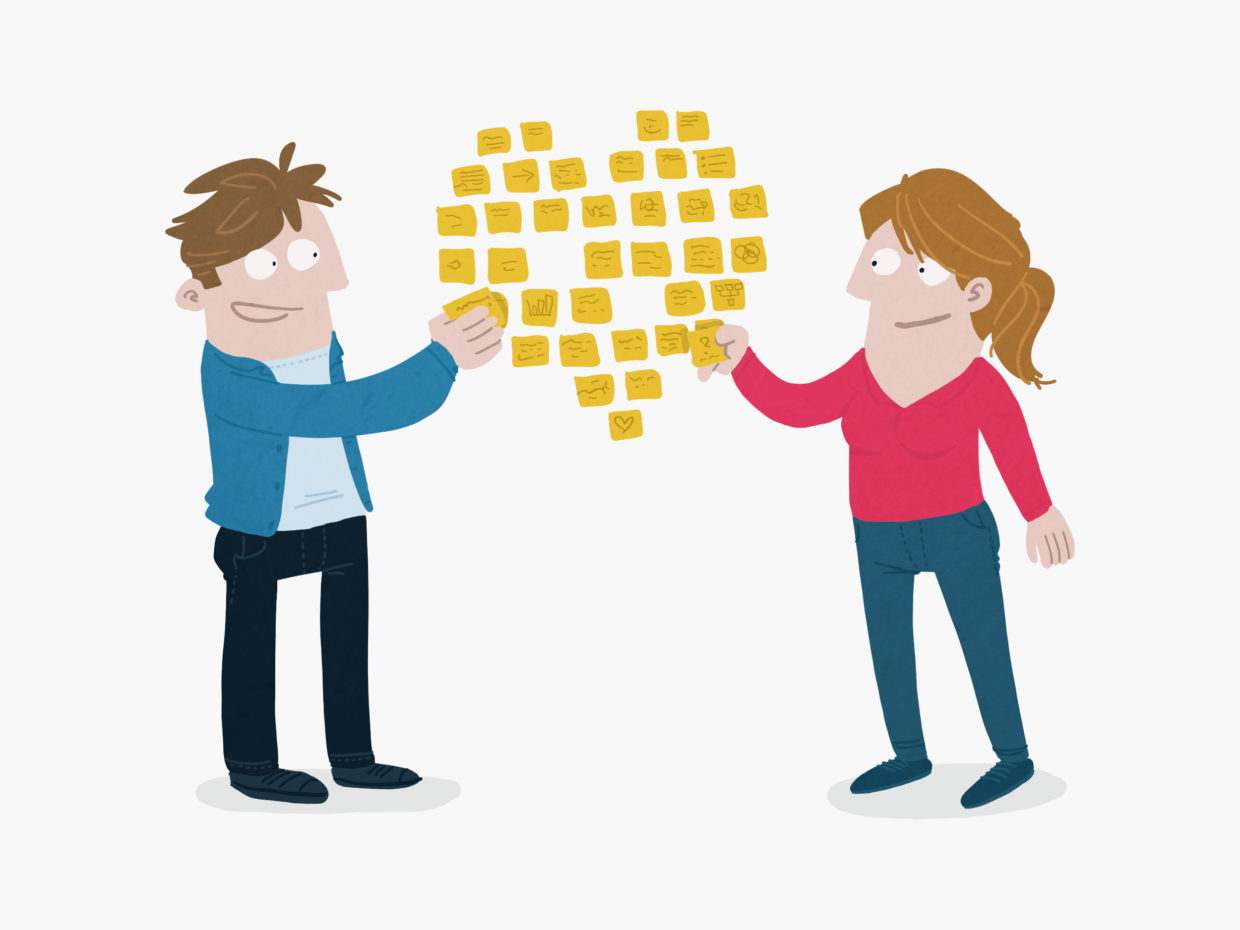Our most powerful ‘tool’ to create valuable solutions for our clients is to play with real people in our design sprints. To make a product or service that helps a company, we focus on making things that are appealing for real people.
Please note: This article and it’s materials are published here courtesy of Mirabeau, the company I wrote this article for.
We tend to exclude ourselves as ‘real people’ because of our strong professional bias as domain experts. This bias clouds our view on the majority of the world. Although we can force ourselves to think like real people, we found that playing with real people is much more natural and wonderful.
Curious how we do Design Sprints? Watch the video:
In the design sprint we determine the context of a perceived problem by interviewing real people. Most of the time this gives us insights we totally overlooked, or took for granted. With this information, we adjust and solve problems with ideas that we think might work. Then we put those assumptions to the test by asking real people.
Play, taken literally
If you ask anybody what they want, their brains starts crunching and most of the time they will give an obvious and a socially correct answer. That’s why we tend to not ask for the ‘what’ but ask real people to ‘play’ with us. Play might be role play, a drawing contest, walking through a park, or a classical associative game. In our experience recreating a natural context is key. Because experiencing a problem and your solution in the right mindset is key, be it ‘late, tired and stressed at an airport counter’, ‘relaxed and kind of tipsy with friends at a bar’, or ‘a last-minute shopping spree’. Playing out these scenarios helps us to understand what people find interesting, boring, important and annoying. By doing this with a couple of people we can blueprint the context and target the cause of the problem we try to solve.
Prototype, Replay and verify
In the sprint we also replay the behaviour and conversations of the real people ourselves. By replaying, we find natural behaviour, bumps, and basically a story in the process. With that story we can constantly validate and optimize during the prototyping process. After the prototype is done, we verify again with our favorite tool: real people. Most outcomes are right on target, but some of them are also quite surprising!
Experts vs the people you’re interested in
Although an expert’s view is valuable to create viable ideas, it is the real people that will connect the value with your idea. Their involvement is key in our experience and makes design sprints not just fun and insightful, but also surprising and a neutral base to continue your process.
So, what’s the next problem you want to solve with real people?
Read more about our work in Finance or contact Peet Sneekes, psneekes@mirabeau.nl for more information.
About the author
As a creative consultant at Mirabeau Peet helps clients to innovate their business and lives with all things digital.
